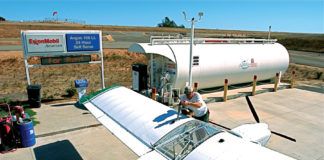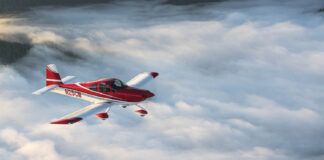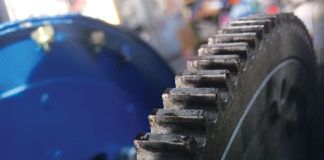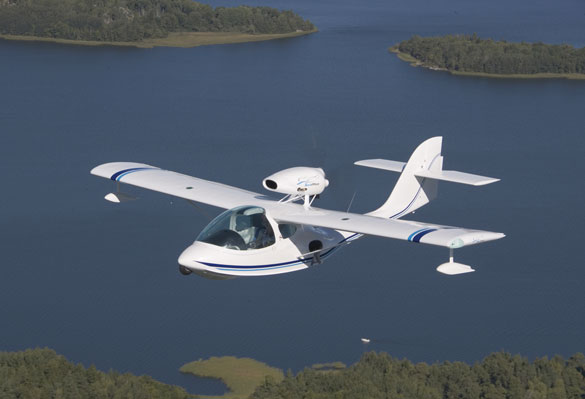
The SeaMax offers smooth handling in the air and on the water.
One of the notable features of Light Sport Aircraft (LSA) rules is the large number of recognized categories and classes of these aircraft. With the exception of helicopters, nearly every type of flying machine imaginable is represented-including several (powered parachutes and weight-shift powered hang gliders) never before officially controlled by the FAA except as ultralights. A gross weight limit of 1320 pounds was set for all LSAs with one exception: Seaplanes are allowed a gross weight limit of 1430 pounds.
Restrictions on LSAs, which are intended as entry-level aircraft that can be flown by pilots with limited experience and privileges, include a prohibition on retractable landing gear. Yet, volunteer drafters of the Light Sport rules certainly intended for seaplanes to operate with retractable gear.
Somebody at the FAA had other ideas, which resulted in a bizarre interpretation: LSA seaplanes could incorporate repositional gear, but the pilot could not legally raise or lower it in the air. If you take off from a runway-the FAA said-you may not raise the gear to land on the water. And a water takeoff precludes putting the gear down to land on a runway.
The FAA administrator was immediately petitioned to vacate this nonsensical interpretation, which she said she would fix. But it was more than three years before what the FAA characterized as an error was changed so that Light Sport seaplanes could operate in a normal manner.
Launch!
Now that logic has prevailed, the SeaMax amphibian from Brazil is ready to show its stuff. I flew with two SeaMax pilots at last winters LSA Expo at Sebring Florida. The first flight was a water demonstration, and that was followed the next day with a flight to go through my usual list of handling and performance checks.
Lets begin with a summary of the aircraft and where it originated. Aimed at an all-composite upgrade of the Brazilian Microleve Corsario amphibian microlight, the SeaMax design was begun in 1997 by chief designer Miguel Rosario. When Microleve decided not to pursue the new plane, Rosario started his own company.
Over the next several years, the SeaMax evolved from the prototype-flying in 2000 powered by an 85-horsepower French JPX engine-to the current version based on Rotax 912S power and a larger three-blade propeller. The SeaMax is manufactured by Airmax Construcoes Aeronauticas LTDA in Brazil, and the company is in the process of more than doubling production to six to eight units per month. More than 100 of these aircraft are flying worldwide.
Empty weight is 770 pounds, and maximum gross weight is 1320 pounds, which seems strange given the amphibs upper weight limit. Malcolm Jones, with whom I flew in Florida, says the 1320 number is coincidental, and the design and test gross weights were established for the SeaMax for worldwide markets before considering the U.S.
Flying
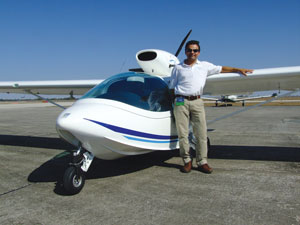
Carlos Bessa of SeaMax USA and the new amphibian from Brazil.
Jones, who is a low-time pilot, has water ops in a SeaMax wired. We spent more than half an hour sampling numerous lakes and a pond near Sebring. Not living where such operations are routine, my seaplane time is minimal despite having the rating, and I was happy to let Jones do most of the piloting.
We took off from Sebring, climbing at 65 knots to the LSA pattern altitude under 500 feet. Jones raised the electric/hydraulic gear, and we headed for a small lake to the northwest. Rechecking that the gear was up, we approached at about 55 knots, and Jones made a smooth nose-high touchdown at less than 50 knots. Leaving the power on, he demonstrated cruising the lake on the step, using rudder and opposite aileron to remain wings level in sweeping water turns, not allowing either pontoon to touch. After slowing to a stop, we took off into a slight breeze, leaving the water at just over 40 knots in 14 seconds. Air temperature was about 60 F, and fuel quantity was close to half the 25-gallon capacity.
A high thrust line and large prop require a small but perceptible pitch adjustment with power changes, as you would expect. Yet pitch force is light enough that you can compensate with slight stick pressure, or you can retrim with buttons in the single stick between the seats. There’s a water rudder that lowers from the rudder when commanded, but Jones did not deploy it. It no doubt gets used for slow taxiing and docking. Dropping into small lakes would become an option once pilot experience is gained. The book value for takeoffs and landings-both on paved runways and water-is 450 to 500 feet. After one last lake check, we climbed to the Sebring LSA pattern altitude and made sure the gear was down before entering base leg. Displaced seaplane pilots could develop Florida envy on a day like this.
Flying, Part 2
On closing-day Sunday, when Expo attendance had slacked off, I flew with Carlos Bessa, a flight instructor from Brazil. I noted that checking the high-mounted Rotax engines oil supply-which requires turning the prop by hand and measuring oil quantity on the oil reservoir dipstick-could be a challenge.
However, appreciation of the excellent detail work in the composite structure was no challenge at all. Adding to the ambiance are a wide cockpit (45 inches) and creature comforts that include easy over-the-side entry, leather seats, and excellent panel layout and controls placement. A sculpted overhead fairing between the seats keeps some switches and circuit breakers far from the water. Before belting tightly, we lowered the huge canopy so we could reach it. A short taxi then got us lined up for a quick liftoff with 10 of flaps and a climbout at 65 knots. Leveling at 1500 feet, we accelerated to a maximum of 95 knots while showing 5300 engine rpm. The required rudder pressure feels higher than lateral stick pressure for roll control, but the balance is quite nice anyway.
LSA regulations require these aircraft to demonstrate positive pitch stability, and in my experience, SeaMax and all of the others qualify. The check is to trim, raise or lower the nose, and release the pitch control. In a few cycles, the nose should damp its oscillation and return to the original pitch attitude and airspeed, as the SeaMax does.
Roll rates are similar in this category. My drill is to set cruise airspeed and count the seconds from one 45 bank to the other 45 using full aileron and (if Im clever enough with my feet) coordinated rudder. Elapsed time is usually 2 to 3.5 seconds depending on wing size and mass (including how much fuel is in the wings). SeaMax turned in a time of less than 3 seconds.
A series of stalls came next. We tried a clean approach stall, which occurred at 27 knots indicated. We were well below maximum gross weight, but I suspect the airspeed indicator was reading too low. A normal approach stall (with 10 of flaps) went well; there was no wing drop at the break, and easing back pressure had us flying immediately. Bessa demonstrated an approach stall in a steep bank and then, at 1500 feet, maneuvered aggressively at 60 knots including a high-angle pitchup (nearly 30) intended to get us over imaginary trees at the edge of an imaginary pond. The airspeed indicator never went below 40 knots.
We returned to Sebring at 75 knots and entered the tower-controlled pattern for Runway 18. The SeaMax glide ratio is 10.5:1, Bessa said. With a glide that flat, you don’t need much power to stay on a normal glide path, and touchdown was smooth. In the air and on the ground, the SeaMax feels solid. Other pilots will like it as much as I do.
For more information, call 863/557-4457 or visit www.seamaxusa.com.

![]()
Dave Martin served as editor of this magazine for 17 years and began aviation journalism evaluating ultralights in the early 80s. A former CFI (airplanes, gliders, instruments), hes flown more than 160 aircraft types plus 60 ultralights (including a single-seat, no-basket hot air balloon). Now living at a residential airpark in Oregon, he flies his Spacewalker II homebuilt as a Sport Pilot.

